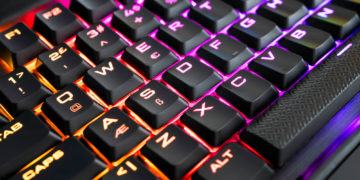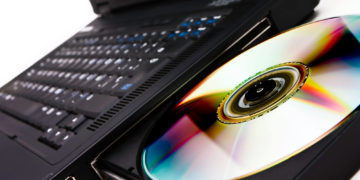
Programs like AutoCAD, 3D Max, SolidWorks, Adobe 3D Modeling, and Revit are hardware demanding, so if you are an architect, engineer, or college student in the same fields, and you want to run these programs on a laptop, you need to be prepared to drop some serious $$$ since you’ll need high-end specs. It’s the same for, say, laptops for data science.
For example, you need a powerful processor, decent graphics card, good memory, and enough storage space, and all of these things are costly. Investing in a laptop that isn’t powerful or reliable enough is just a waste of money, so there’s really no other way around it.
Buying a desktop PC instead also isn’t a workable solution all the sime, since you often need to travel and meet clients to showcase your work. As such, we are here to help you find the best laptop for AutoCAD, so you can get through this arduous task in a breeze.
Recommended Laptop Specs For AutoCAD
The first and most important thing is to take note of the minimum and recommended system requirements for an AutoCAD laptop, which are proposed by the AutoCAD publisher, Autodesk, and augmented by our own experts with similar options to widen your playing field.
| Minimum requirements | Recommended requirements | |
| Display | 15.6-inch HD (1366 x 768) | 15.6-inch Full HD IPS (1920 x 1080) |
| Processor | 7th Gen Intel Core i5 | Intel Core i7 |
| Graphics card | 2GB NVIDIA GeForce MX250 | NVIDIA RTX with 6GB vRAM or GTX with 4GB vRAM |
| RAM | 8GB | 16GB |
| Storage | 256GB SSD | At least 512GB SSD |
| Battery life | 4 hours | 7 hours |
AutoCAD 2D
The regular version of AutoCAD is capable of running both 2D and 3D models. If you are a chemical or electrical engineer, or someone working with contour maps, you are likely using the regular AutoCAD, in which case you are free to work with “lower” specs that can easily accommodate small projects.
These specs will also enable you to run other software that don’t require you to viewport models in 3D, such as MatLab and Staad Pro.
AutoCAD 3D
Meanwhile, AutoCAD 3D, which includes regular AutoCAD with 3D models, as well as AutoCAD Architecture, requires a more high-end hardware configuration. This will also allow you to run other software like 3DS Max, Revit, SolidWorks, and SketchUp.
Project Size
To give you a better idea, our metrics for project sizes are as follows:
- Small projects: applicable for students using regular AutoCAD in their undergrad classes, with projects typically comprising of ~300 parts
- Medium size projects: anyone using AutoCAD outside of the classroom or using AutoCAD for simple client work, with projects ranging from 500 part assemblies to at most 200 part projects
- Large projects: professional engineers in office settings working in collaborative projects that usually include large 3D drawings comprising of huge numbers of parts or polygons, often reaching more than 5000 parts on multiple sheets
If you are a student, it also helps to check your department’s laptop system requirements for AutoCAD work before buying.
Top 8 AutoCAD Laptops
Remember, we all use AutoCAD features differently based on various factors, including our professional hierarchy, skillset, and personal or organizational requirements. Hence, we extensively researched on the most promising laptops today and made sure that each one meets productivity, functionality, and relevance requirements.
In line with that, we made sure that the following CAD laptops on this list have all the requisites for running the software, as well as letting users indulge in other related tasks, including simulation software units, rendering, and diverse modeling.
Acer Aspire 5 Slim Laptop
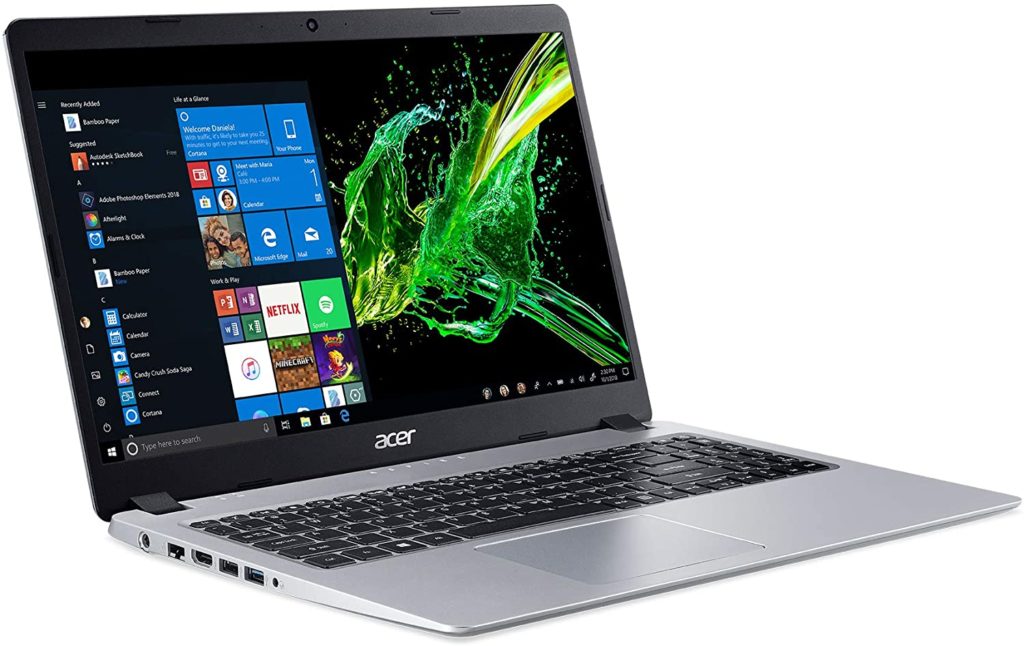
Taking the top spot for the best laptop for AutoCAD and Revit is the Acer Aspire 5 Slim Laptop, which is a portable, efficient, and sleek notebook that can cater to all your software and hardware demands. In fact, it’s one of the best CAD laptops you’ll see when it comes to rendering, modeling, and drawing.
All those amazing features are topped off by the lightweight and elegant chassis. Not only that, this laptop is also powered by the ultra-efficient Intel Core i5-8565U processor from the U-series, which comes with a chipset that offers a superior 3.9GHz turbo clock speed. This means you have the capacity to create more intricate AutoCAD tasks with precision.
Plus, while AutoCAD isn’t exactly graphics intensive, this laptop gives you the added bonus of a dedicated GPU in the form of the GeForce MX250 graphics card that comes with 2GB of vRAM, which is beneficial when it comes to 3D mesh modeling and photorealistic rendering.
- 15.6” full HD IPS (1920×1090) display
- Intel Core i5-8565U CPU
- NVIDIA GeForce MX250 GPU
- 8GB RAM, 512GB SSD
- 9.5 hour battery life
ASUS TUF FX505DT Gaming Laptop

A strong contender is the ASUS TUF FX505DT Gaming Laptop, which is the latest TUF gaming laptop by asus that adeptly handles most modern games while offering superior reliability, an RGB keyboard, GeForce GTX 16-Series graphics, and AMD Ryzen processors to effectively stand apart from the competition.
As for the display, it comes with the new NanoEdge design with an ultra-thin bezel to give you extreme immersion, all in a compact package. The wide viewing angles also guarantee consistently vivid colors regardless of your viewing position.
The best part, however, is the perfect blend of power and portability, thanks to the graphics card that perfectly optimizes the laptop’s hardware performance. This allows you to work and play at ideal settings without suffering from any issue or lag.
- 15.6″, 120Hz Full HD display
- AMD Ryzen 5 R5-3550H CPU
- GeForce GTX 1650 GPU
- 8GB DDR4 RAM, 256GB PCIe SSD
- Windows 10 Home OS
Acer Nitro 5 Gaming Laptop
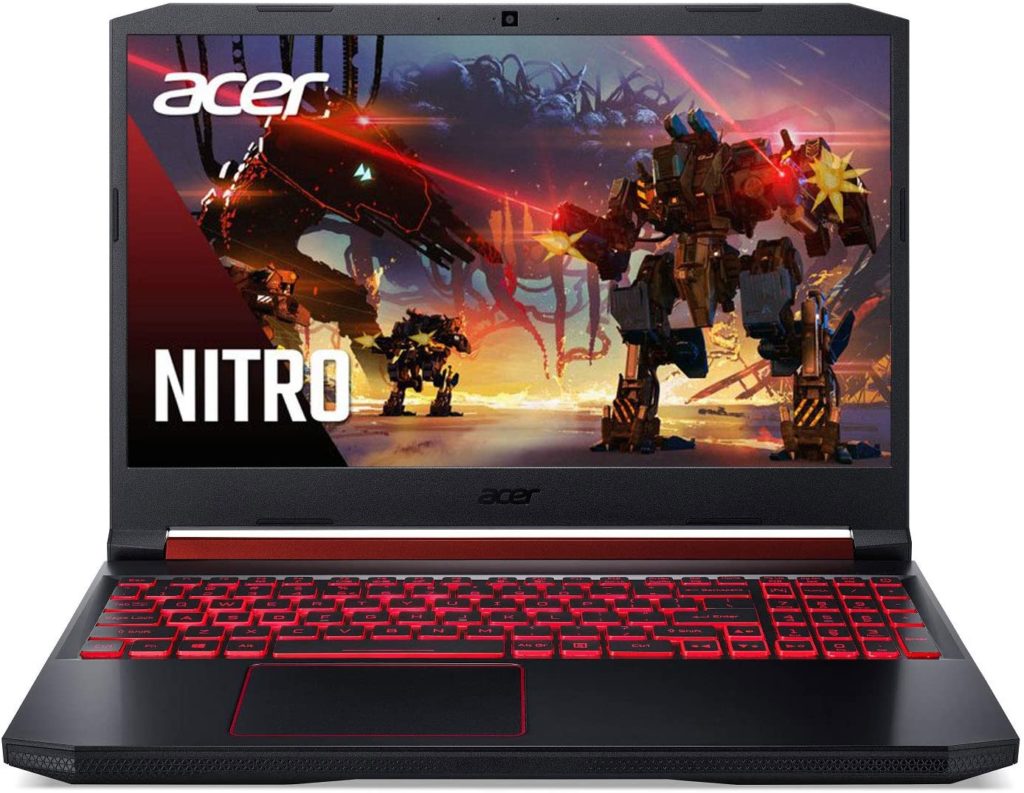
We also really like the Acer Nitro 5 Gaming Laptop, an ultra-cool machine that allows you to soar to new heights anytime, anywhere, with its sleek, eye-catching, and mobile design comprising of the 15.6” full HD display, plus the wide array of rich features that are sure to put you in complete command of the action.
This superior laptop leverages the speed and power of the 9th generation Intel Core processor, along with the high-performance NVIDIA GeForce GTX graphics card driven by Turing architecture. This killer combo of smart features makes for a devastatingly powerful laptop.
To top it all off, even with the most hardware demanding programs and CPU or GPU intensive tasks, or when using the laptop for hours or days on end, there’s no need to worry about overheating, thanks to the Acer CoolBoost technology and the twin fans that let you chill out.
- 15.6″ Full HD IPS display
- Intel Core i5-9300H CPU
- NVIDIA GeForce GTX 1650 GPU
- 8GB DDR4 RAM, 256GB NVMe SSD
- Windows 10 Home OS
- 8 hour battery life
Acer Predator Helios 300 Gaming Laptop
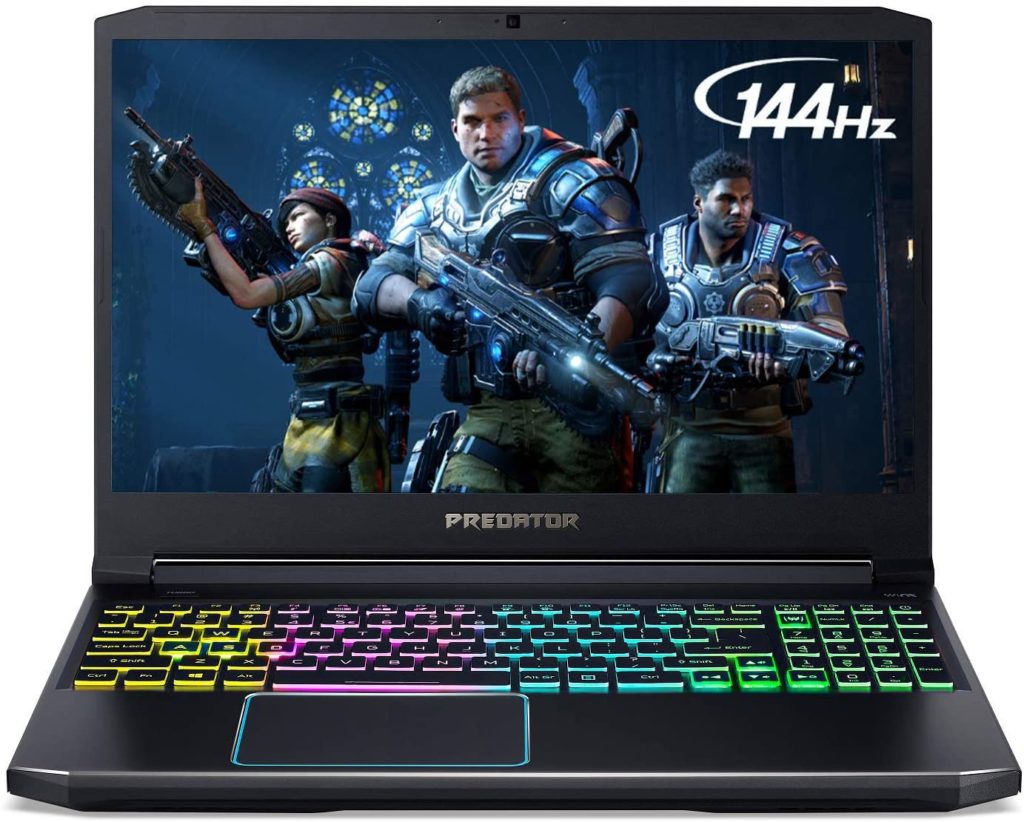
Another strong pick from Acer is the Acer Predator Helios 300 Gaming Laptop, a highly popular option not only for gamers, but also for many STEM fields, since it strikes a delicate balance between the dedicated graphics card and the featured processor to give users the best in terms of performance and functionality.
This high-end CPU and exceptional gaming-geared GPU bring forward exceptional processing power to its users. The Intel Core i7-9750H, for one thing, is one of the most premium chipsets you’ll find in today’s market, and it’s capable of letting you do so much, from layout viewports to data extraction and migration, photorealistic rendering, and 2D regeneration.
We are also impressed with its turbo clock speed that can go as high as 4.5GHz. Simply put, this processor screams performance and reliability. As such, you get to enjoy an exceptional laptop that isn’t too expensive but definitely gives off top-shelf vibes.
- 15.6” full HD IPS display
- Intel Core i7-9750H CPU
- NVIDIA GeForce GTX 1660 Ti GPU
- 15GB RAM, 512GB SSD
- 6 hour battery life
Microsoft Surface Book 2
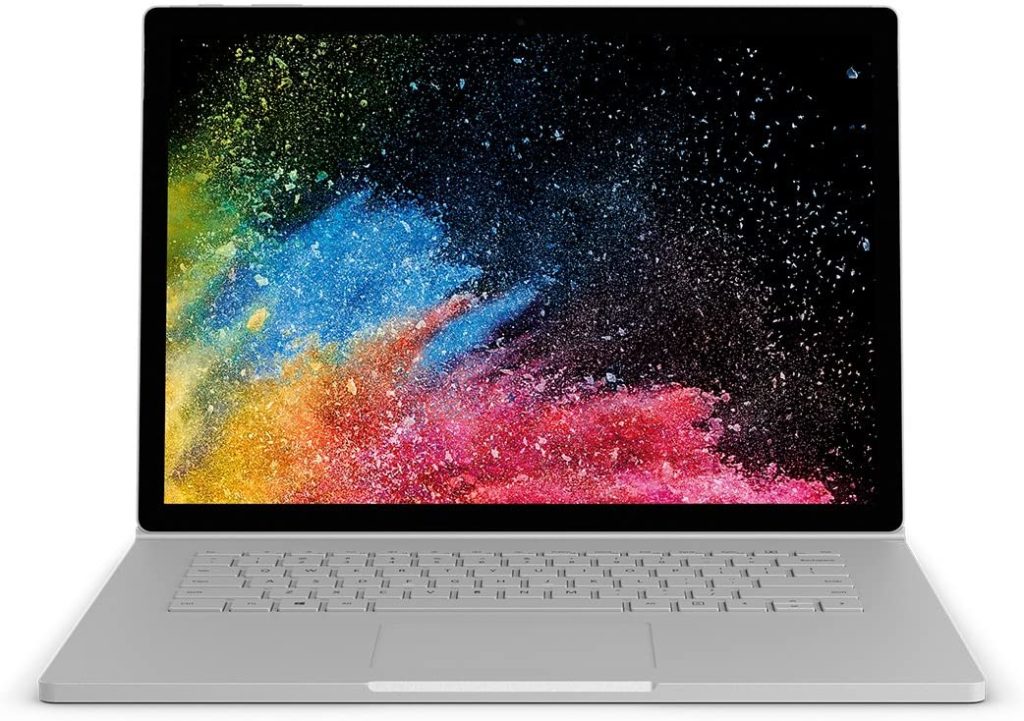
Ranking fifth is the Microsoft Surface Book 2, a professional grade laptop built for performance, which lets you run various software all day long with the latest Intel quad-core processors and the best graphics cards on the market today.
Every detail in the creation of this laptop is packed with innovation, and as a result, you get unprecedented performance and power in a lightweight, compact laptop. It even features a touchscreen display and backlit keyboard, and comes with a stylus pen for uninhibited productivity on the go.
If you want a laptop that adapts to how you create, this is a highly versatile, powerful, and portable laptop that turns into a tablet or studio. All in all, it’s a great choice for work, creation, and playing without limits.
- 13.5 or 15” PixelSense display
- Intel Quad Core i7 CPU
- NVIDIA GeForce GTX 1060 GPU
- 16GB RAM, 256GB storage
- Windows 10 Pro OS
- 17 hour battery life
Lenovo Ideapad L340 Gaming Laptop
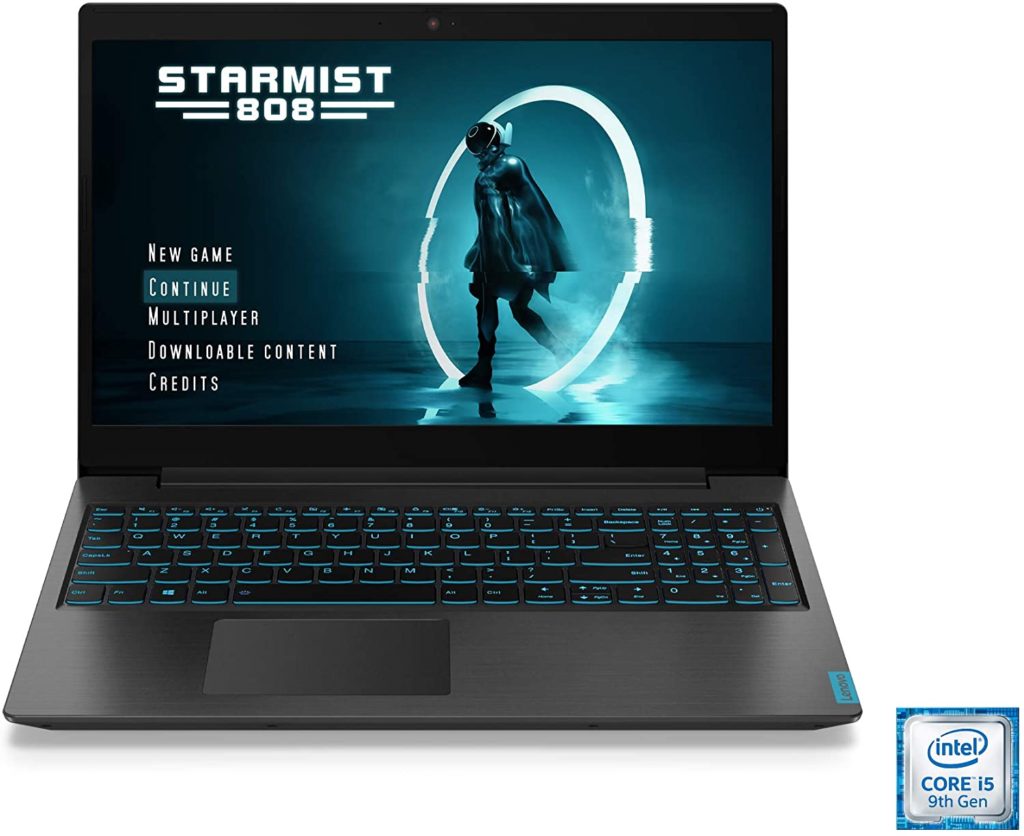
Don’t forget to also check out the Lenovo Ideapad L340 Gaming Laptop, a powerful gaming notebook that paves the way for outstanding professional productivity, especially for those working with CAD software for modeling, drafting, designing, and so on.
It’s a great choice of a laptop for AutoCAD because of its Intel Core i5-9300H chipset that comes with four cores and performs satisfactorily thanks to the 4.1GHz turbo clocking speed. It even comes with an existing SoC that can assist with SHF recognition, making it great for basic simulations, rendering, drawing, and drafting tasks.
Not only that, you also get 8GB of RAM to use for working with sizable datasets and spreadsheets, as well as indulge in multitasking. The solid state drive is also plenty and features ultra-fast capabilities. All things considered, it’s a strong contender for the best laptop for CAD.
- 15.6” full HD IPS display
- Intel Core i5-9300H CPU
- NVIDIA GeForce GTX 1650 GPU
- 8GB RAM, 512GB SSD
- 9 hour battery life
Razer Blade 15 Gaming Laptop
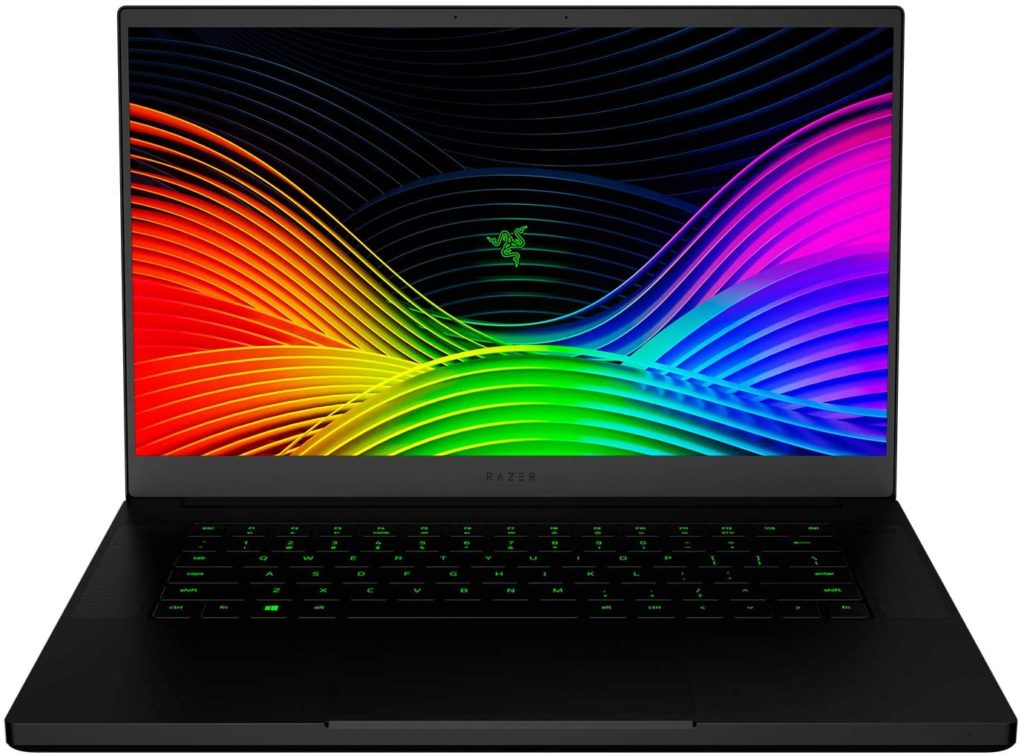
One of the best alternatives to a workstation when it comes to indulging yourself with AutoCAD usage is the Razer Blade 15 Gaming Laptop, which is a gaming notebook that is powerful enough to handle intricate 2D or 3D simulations, creations, and drawing.
That’s because it features an insanely powerful processor in the form of the Intel Core i7-9750 with a turbo clock speed of 4.5GHz. Here, you get an existing SoC equipped with 12MB of cache memory to efficiently minimize process time and application access times. It also boasts of the GTX 1660Ti graphics card that efficiently handles 3D CAD tasks with precision.
To add to that, this graphics card comes with six gigabytes of video RAM to help you decipher intricate textures without any issue. We also love the 16GB RAM that perfectly complements the CPU especially when multitasking. Even the SSD, despite the limited size, is ultra-fast.
- 15.6” full HD IPS display
- Intel Core i7-9750H CPU
- NVIDIA GeForce GTX 1660 Ti GPU
- 16GB RAM, 256GB SSD
- 6 hour battery life
ASUS ROG Zephyrus S Gaming Laptop
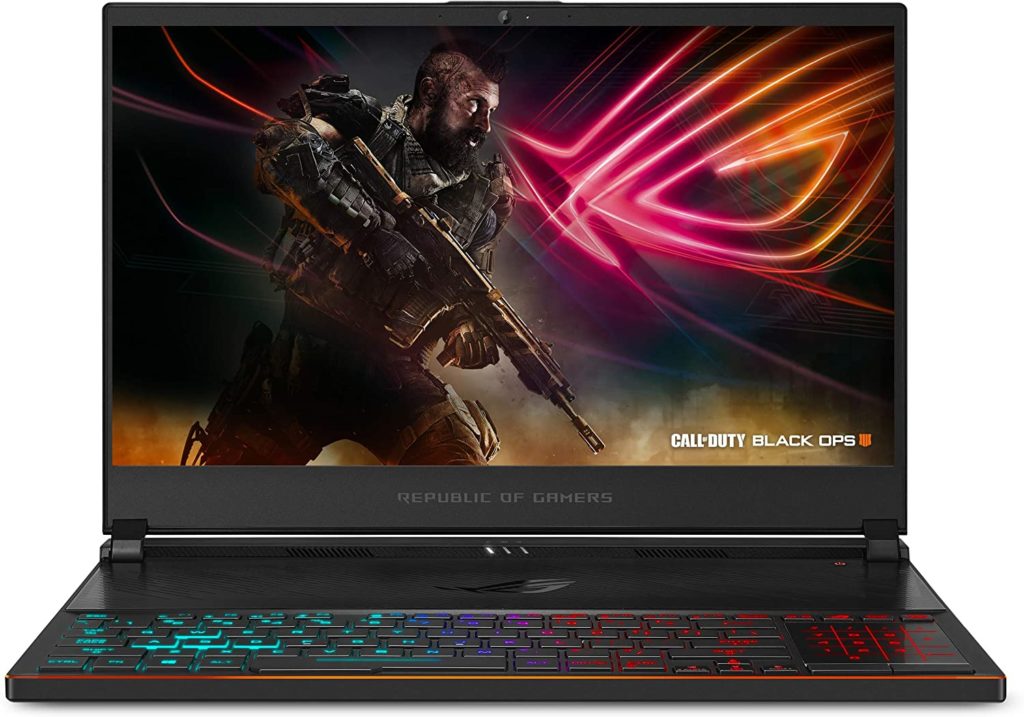
Finally, there’s also the ASUS ROG Zephyrus S Gaming Laptop, yet another great choice for a laptop to run AutoCAD. The thing with this laptop is that it’s far from being affordable, so it’s definitely not a suitable choice for unemployed college students, but for experienced professionals, the hardware configurations of this laptop make the price seem like a steal.
For one thing, the 8th gen Intel Core i7 processor is a high-end version, and coupled with 16 gigabytes of DDR4 RAM, 512GB of NVMe solid state drive storage, and the superior NVIDIA GeForce GTX 1070 graphics card, you get a powerful workstation like no other.
In fact, the storage space alone is good enough that you won’t have to delete or move your files for a good two years. That’s not the only good thing, either. This laptop also boasts of the full HD display with a high frame rate, along with the backlit keyboard. It’s also a great laptop for SketchUp, ProgeCAD, DraftSight, and TurboCAD Pro.
- 15.6” 144Hz IPS display
- Intel Core i7-8750H CPU
- GeForce GTX 1070 GPU
- 16GB DDR4 RAM, 512GB PCIe SSD
- Windows 10 Home OS
How To Find The Best AutoCAD Laptop

You’ve seen the system requirements that you’ll need to run AutoCAD on a laptop, as well as our top AutoCAD laptop recommendations, so now, let’s talk more about what hardware specs you need depending on the AutoCAD version you plan to work with, and why you need each hardware for such tasks.
Since you will be working mainly with AutoCAD in your line of work, understanding the software better and how your laptop helps you work with it will give you a better insight as to how to choose the right tools and increase your work productivity.
Of course, if you are still a college student and are mainly working with small projects, you can make do with simpler, “less powerful”, and more affordable notebooks.
AutoCAD Software
AutoCAD is actually an all-encompassing term that includes various products from AutoDesk. There are many different versions of AutoCAD, and based on their hardware requirements, you can divide them into AutoCAD 2D and 3D.
The original and regular version, AutoCAD, is the one that most of us are familiar with. With this software, you can design and model objects in both 2D and 3D. As such, even with the newer versions, it’s still the most widely used, especially in universities, since it’s a great and useful way to introduce someone to CAD design.
Other AutoCAD Versions
That said, other versions of the software are also in use, such as the AutoCAD LT, which is somewhat less powerful and is mainly reserved for 2D projects, and the AutoCAD Electrical, which is another 2D software used for 2D representation, circuitry, and circuit design.
There’s also AutoCAD Architecture, which comes with advanced architectural design tools to allow you to design by using pre-made objects for models in 3D, such as windows, walls, and doors. You’ll also see AutoCAD Civil 3D, which is similar to the previous version, but is optimized for planning landscapes, roadways, and rivers.
Naturally, buying a laptop needs to accommodate the AutoCAD version you want to use. If it’s a 3D one, for instance, you need a dedicated graphics card. This will allow you to work with both 2D and 3D projects. But if it’s just 2D versions you need, an integrated GPU will be fine.
Processor
There are vast options when it comes to laptop and desktop processors, since they are the heart of the computer. You’ll find plenty of Intel and AMD CPUs on the market, many of them with increased speeds thanks to smaller transistors, and in other cases, the addition of more cores to the CPU.
Number of Cores vs Clock Speed
Now, more cores mean you can run various applications simultaneously, with each of them utilizing a different core. But, since AutoCAD is not optimized for multiple cores, it’s better to prioritize the CPU’s clock speed of GHz, unless you plan on multitasking with various applications, in which case a quad-core processor is a good idea.
When choosing a CPU, some of the best options include the Intel i7 and the AMD Ryzen 5. Do keep in mind that some processors from both Intel and AMD have a turbo mode that shuts down any unused core to allow the active cores to run faster. This may or may not be beneficial depending on how you want to use your laptop.
Additionally, if you want to use some Autodesk features or 3rd party rendering engines, check whether these things are multithreaded, and if so, think about investing in additional cores. Ultimately, the best choice is a processor with a fast clock speed and a high number of cores, but that will also be the most expensive.
Graphics Card
The thing with AutoCAD is that it’s not really a graphics-demanding application, primarily because it mainly produces lines in a 2D environment, with the rare 3D projects. The same goes for other AutoDesk applications like Revit and 3DS Max, especially when it comes to rendering.
As such, there’s really no need to invest in a high-end graphics card unless you are planning on using the laptop for other, more graphics-intensive tasks, like gaming. Having said that, don’t completely skimp out on the GPU either. At the very least, go for a dedicated GPU with 2GB of vRAM to enjoy decent performance.
Integrated GPU
If you are working with relatively small projects, the viewport isn’t going to be too bad on a cheap integrated GPU. Besides, if you have at least a Core i5 processor and enough RAM to boot, you can even make do with an Intel HD card. Unfortunately, this situation only applies for students, so if you are a professional, you have no choice but to invest in a dedicated GPU.
Dedicated Graphics Card (dGPU)
The problem actually starts when choosing a dedicated GPU, since many of the available options are not compatible with AutoCAD, and the list of compatible models on AutoDesk is nowhere near complete. This means you’ll need to do a bit of research to make sure that the GPU on the laptop you’re eyeing can actually work with AutoCAD.
RAM
Aside from the processor, the RAM of a laptop is another important factor that influences its performance. Specifically with AutoCAD software, or something like 3DS Max, you need as much RAM as you can get your hands on, perhaps around 16GB or so.
Although 8GB RAM should be enough for basic CAD work, if you want to ensure the best performance, especially when doing 3D model rendering, definitely go for more RAM.
Storage
You probably know that laptop storage solutions are available in two options- hard disk drives and solid state drives. No matter the criteria, SSDs are always better. For one thing, the read and write speed of SSDs are significantly faster. They are also more lightweight, take up less physical space, and don’t drain the battery as much.
That said, SSDs are slightly more expensive, so if you need ample storage and cannot invest in a massive SSD, a combination of the two should be workable. Or maybe just go for an external hard drive. It’s really up to you. Just keep in mind that transferring files back and forth from your laptop to the external HD can be cumbersome.
SSD (Solid State Drive)
While SSDs are still pricier than HDDs, the difference in cost has been continuously dropping over the years, so there’s no reason not to choose an SSD storage, especially if you want a fast and reliable way to host your OS, the AutoCAD software, and the active projects you’re working on. An SSD will allow you to load files, launch applications, and boost the system in seconds.
HDD (Hard Disk Drive)
If there’s any redemption for HDDs, it’s that a bigger storage space is easier to find, and less expensive to buy. In fact, it’s so common to find 1TB of HDD storage on today’s laptops. This is why many people choose for an HDD-SSD combo.
Display
You shouldn’t forget to take into account the laptop’s display quality, especially when working with AutoCAD or 3DS Max, since you’ll want good visuals for better quality work. At the very least, go with a full HD screen with IPS technology to enjoy accurate color, a full HD for wider viewing angles, or even 4K for a better overall experience.
Size
If you need a computer for AutoCAD, the smallest you should go for is a 13 inch screen, which is really only workable for students who won’t spend as much time with the software, and even when they do, it will likely be with the giant PCs in their department’s computer lab. In fact, the only time you should buy an 11 inch laptop is if you’ll only use it for everyday tasks.
For professionals who are serious about CAD, go for a 15 inch laptop. If you don’t have issues with portability, you can even attempt a 17 inch laptop, but expect that you won’t go far with it, due to the sheer size and weight.
Resolution
The screen resolution is just as important as the size, since it’s what allows you to fit more tools into the viewing area, thereby allowing you to play with a bigger part of the interface next to the canvas. This also means enjoying quick access to tools and commands instead of clicking on menus every time you need something.
The good news is, all laptops with dedicated GPUs readily come with at least a full HD or 1080p display. Now, while 4K sounds like a dream, keep in mind that not only does it cost more, it’s also not optimized for the CAD software, so you might actually have more trouble using a 4K screen, with weirdly sized and placed tools, for starters.
Operating System
All of the CAD laptops we reviewed on this list come with a Windows OS, since this operating system is what the AutoCAD software is optimized for. While we have zero issues whatsoever with Mac, the simple fact is, it’s not really fully compatible with most AutoCAD software, so unless you are willing to double boot your Macbook with Windows, stay clear of the Mac OS.
FAQs
Is AutoCAD more processor or graphics card intensive?
AutoCAD, like many of the similar software in use today, relies more on the processor, courtesy of calculations and logic decoding. In fact, even 2D rendering and modeling can be perfectly initiated with the CPU and any integrated GPU.
How much RAM do I need for optimum AutoCAD performance?
Since AutoCAD comes with various tool sets including architectural and electrical enhancements, not to mention Plant 3D and Map 3D, the general rule is to invest in at least 8GB of RAM to run the software. But, if you want to multitask or work in professional settings, a 16GB RAM is the bare minimum.
Why is the graphics card important in AutoCAD?
In most cases, the AutoCAD software doesn’t need the graphics card, hence the compatibility of many integrated GPUs. That said, if you plan on doing 3D modeling, photorealistic rendering, mesh modeling, and mental ray rendering, you will need Ray Tracing to handle these graphics intensive tasks, and here is where a god dedicated GPU becomes important.
Which is the best CPU for advanced AutoCAD usage?
There are various options for capable CPUs when it comes to AutoCAD use. One of the best chipsets today is the i9-10900K, both in terms of performance and power. Any 9th or 10th gen Intel i7 are also great. In any case, just make sure that the processor has a considerable base clock speed, and an even more impressive turbo clocking speed.
Final Words
We hope that this review and buying guide has helped you find the best laptop for AutoCAD this 2021. Remember, there are plenty of options on the market, so as long as you prioritize your needs and requirements, you will be able to find a great CAD laptop within your budget.
Also keep in mind that buying a laptop is a huge investment, so it’s only right to do it correctly the first time. Don’t be afraid to shell out a few extra bucks here and there if you believe that it will make your work life so much easier.




